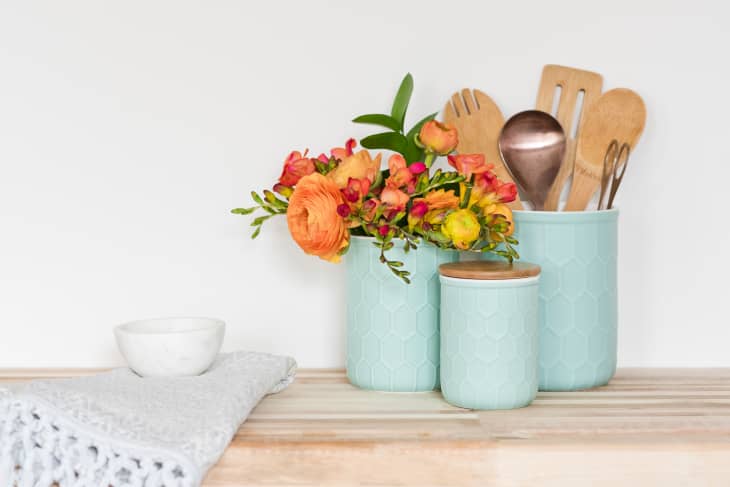How To Oil Butcher Block Countertops
A fresh look for your butcher block countertop doesn’t haven’t to involve the headache of extensive sanding to rejuvenate the surface. An application of food-safe oils (or another of the options we’ll share below) can restore the surface’s sheen and help recondition with each application.
Want a fresh look for your butcher block surface? Try one of these methods for countertops and cutting boards alike.
What Should I Use to Oil My Butcher Block Countertop?
A few options, from basic food-safe mineral oil to conditioners containing beeswax, offer varying results. You’ll want to choose based on the current state of your surface as well as the final preferred finish.
For the shiniest, most revived look, go for the mineral oil and beeswax combination, but read on for the details on all of these.
Food-Safe Oils
Food-safe mineral oil is recommended for regular upkeep and helps keep the surface stain-repellant and looking its best. However, repeated applications won’t build the surface or help repair minor wear like other products.
Mineral oil also provides the most matte sheen of all our suggestions. If your surface has a coating (polyurethane, lacquer, or varnish) it should be sanded before application since oils won’t penetrate a glossy finish.
Walnut oil can be used in the same manner as mineral oil. It will harden a bit once dry and continue to build surface with continued applications.
Culinary oils, although food-safe, should be avoided. Olive, vegetable, and flax oils will soon oxidize and go rancid.
Butcher Block Conditioners
For the most noticeable transformation, try a product containing a combination of mineral oil and beeswax (I had great success with Howard). The beeswax will help fill in voids or small crevices from age or use (i.e., knife marks or cracking). Through continued applications, the natural waxes help prevent drying and cracking and protect the wood.
Countertops should be lightly sanded prior to the first wax application.
Prepare the Surface
Before you start the steps below, do a little preparation with our recent posts on caring for your butcher block.
How To Oil Butcher Block Countertops with Mineral Oil or Walnut Oil
What You Need
- Clean, dry cloth
- Mineral oil (food-safe) or walnut oil
Instructions
-
Start with a clean countertop: Clean countertop surface and remove stains by following the steps in our recent posts.
- Apply two coats of mineral oil: When your countertops are dry, apply one coat of oil. You can pour a little bit at a time directly onto your counter and use the cloth to spread the oil around every inch of the counter. Let the oil soak in for half an hour or so before second application.
- Wipe surface: After allowing second coat to soak for another half-hour, wipe any excess oil with a clean cloth.
How To Apply Butcher Block Conditioners
What You Need
- Clean, dry cloth
- Sandpaper
- Butcher block conditioner
Instructions
- Start with a clean countertop: Clean countertop surface and remove stains by following the steps in our recent posts.
- Sand if necessary: Most conditioners recommended sanding prior to the first application if the conditioner contains beeswax.
- Apply conditioner as directed: For additional applications, simply follow the directions on your chosen conditioner. This will usually mean adding some conditioner to a clean, dry cloth and wiping the cloth along the wood.
- Let soak and wipe: The directions will also typically call for a soaking period of around half an hour. Once the time is up, you can wipe off the excess.
We’d love to hear how you keep your countertop in good condition, too. Which of these oils do you prefer — or do you use something else?
